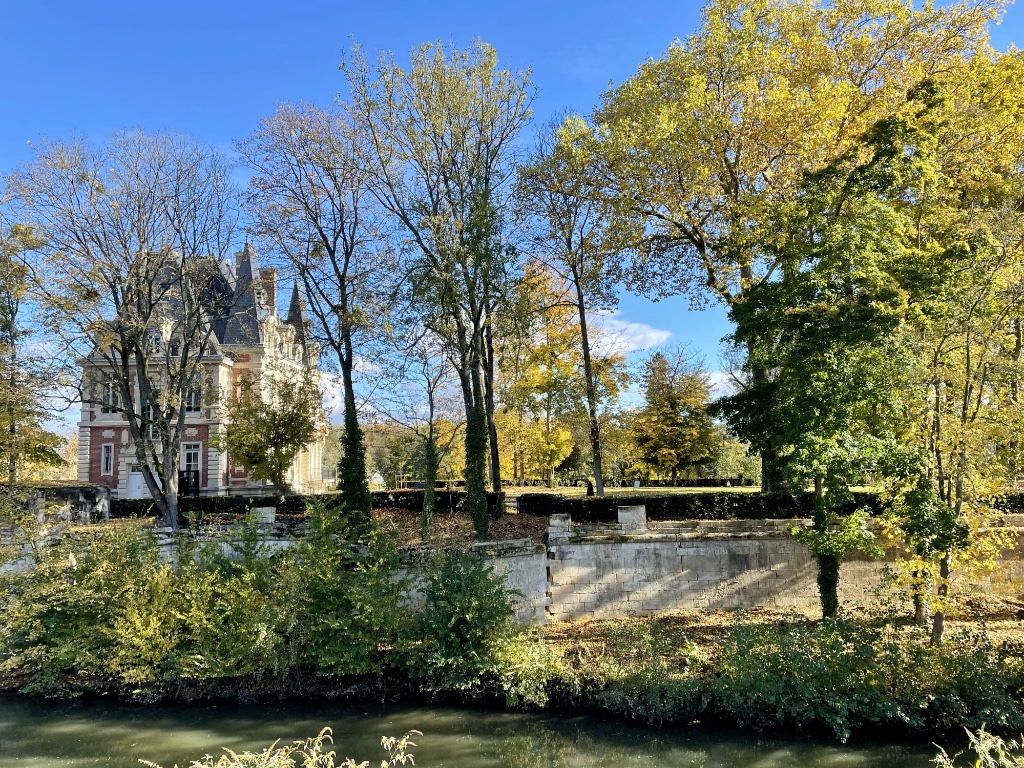
To visit the town of L’Isle Adam, set on three islands on the River Oise, is to want to live there. An hour’s train ride north of Paris, it is even blessed with the last thing you’d expect to find in a northern French town: a sandy beach on the river, suitable for frolicking in the summertime.
L’Isle Adam, located on the edge of a forest, is a verdant town, but it is also graced with handsome buildings like the Château Conti, a stately mansion built on the site of earlier châteaux.

Once the home of such noble French families as the Princes de Condé and the Princes de Conti, the lovely town began to draw artists and Parisians on holiday in the 19th century.

One of L’Isle Adam’s attractions is the Musée d’Art et d’Histoire Louis-Senlecq, which houses a library on French and local history and art history, and a museum whose collection is based primarily on paintings by Jules Dupré (1811-89), a member of the Barbizon School of landscape painters, who grew up in the town and shared his studio with fellow Barbizonian Théodore Rousseau (1812-67), and other local painters. There are also watercolors by Jules Romain Joyant (1803-54), the “French Canaletto” (don’t miss his lovely drawings of Rome, Venice and Avignon) as well as collections of engravings and decorative objects.
The museum holds regular exhibitions, mostly with a local angle. The current one, “Regards Croisés,” looks to artists of the future rather than the past. Three students from the nearby École Nationale Supérieure d’Arts de Paris-Cergy were chosen to explore the museum’s collection and create new works in response to art that spoke to them.

Clémence Le Boucher d’Hérouville (b. 1997) took inspiration directly from nature, spending several days walking along the banks of the Oise, starting in her hometown of Droizelles and ending in L’Isle Adam. Wandering with her sketchbook and a camera in the footsteps of the area’s historic painters, she collected images and made a series of 10 drawings on paper that are hung discreetly at various levels in different rooms (you’ll have to keep an eye out for them) and a large, colorful oil painting, “La Nonette,” that is an amalgam of images retained from her walk.
Rather like a travelogue, handwritten notes on the drawings describe what was happening during the scene depicted. In one, she notes that a man is watching her from the other side of the river as she stumbles through the mud and brambles. “He must be laughing at my struggles,” she writes. Later, memories of her schooldays fill her head as she crosses the town of Senlis, remembering how she smoked her first cigarette as she walked over the same cobblestones.

Another student, Hendrik Gonzalez (b. 1988), also took a walk along the Oise, from Bagnolet to the museum, but the resulting work of art is of a totally different order. The videos and photos he made along the way were completely reworked into a colorful, hypnotic video with a mesmerizing soundtrack. It is incorporated into an immersive installation, “Paysages Tissés,” in a small room, which includes paintings on the floors and ceilings and a sculpture made of flotsam and jetsam found along the way.

The third project, by Matthias Odin-Chatelain (b. 1995), brings bits of the banks of the Oise right into the museum and encases them in resin. Three of the pieces echo paintings by Léon-Victor Dupré (1816-1879), which hang on the opposite wall from Odin-Chatelain’s resin pieces. They incorporate plant matter from the riverbanks and effectively suggest landscape paintings. He builds his works in layers, an echo of the stratification of the land. Another piece, “Hydromancie,” on show in the next room, uses deconstructed art materials to create an abstract sculpture.
While seeking out these contemporary works, enjoy the museum’s historic art celebrating the local landscapes and, when you are finished, take the time to explore the real thing in this lovely town and its environs.
Favorite